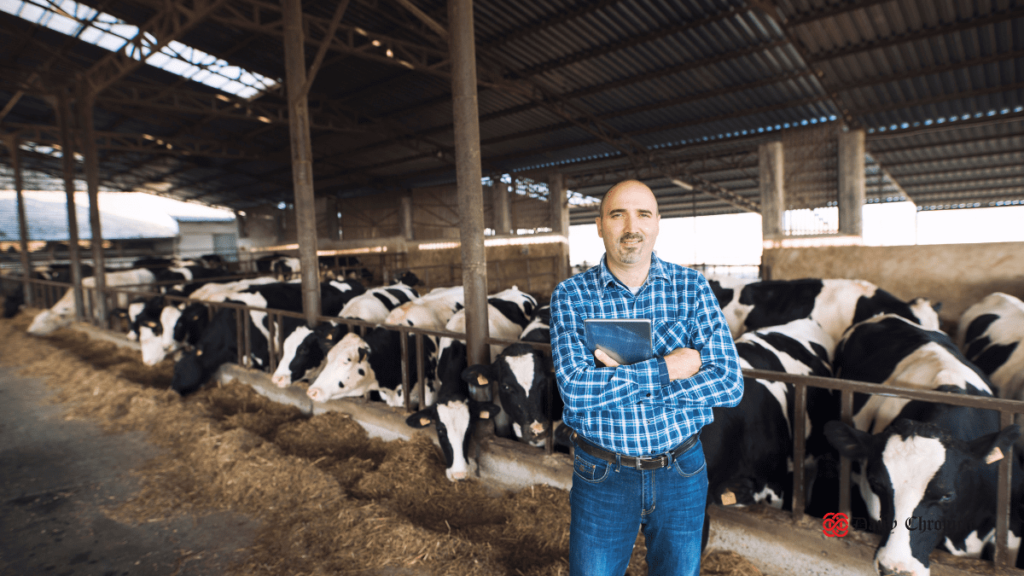Modern milking parlour designs—Parallel, Tandem, Herringbone, and Rotary—play a crucial role in enhancing profitability for dairy farmers. These designs are evaluated for their effects on farm efficiency, labor costs, and milk quality. Implementing these advanced systems helps optimize operations, reduce costs, and increase milk production, leading to a more profitable and sustainable dairy farm.
Milk production has come a long way from the days of manual milking. Today’s dairy farmers utilize advanced technology and innovative designs to improve efficiency and profitability. At the heart of this evolution is the design of milking parlors, where milk is extracted and processed.
On a dairy farm, the place where the milking magic happens is called a “parlor.” Milking parlors, like cows, come in all different shapes and sizes. Farmers put a lot of thought and effort into the design of this space, focusing on functionality and efficiency to enhance both cow and worker comfort.
Here are the four main designs of milking parlors used by dairy farmers and how they contribute to profitability.
1. Parallel Parlour
In this design, cows stand parallel to each other, which allows the milker to reach the udder from the rear. Milking starts only once all cows are in their stalls, and they are all released from the parlor at one time. The process is efficient, typically taking about 10 minutes.
Profitability Factors:
- Efficiency: Milking sessions are quick as all cows are milked simultaneously, reducing labor costs and increasing throughput.
- Space Utilization: Maximizes space use, allowing more cows to be milked in a compact area.
- Worker Safety: Reduces the risk of injury from being kicked, which can lower insurance costs and improve safety.
2. Tandem Parlor
Tandem parlors have cows standing nose-to-tail in individual stalls, providing a side-on view of the udder. This setup allows cows to be released one at a time, which avoids waiting times if some cows take longer to milk.
Profitability Factors:
- Individual Attention: Facilitates better monitoring of udder health, potentially reducing veterinary costs and enhancing milk quality.
- Flexible Operations: Adaptable to individual cow productivity, minimising downtime.
- Enhanced Cow Comfort: Better handling reduces stress, improving milk yield and herd health.
3. Herringbone Parlor
Herringbone parlors, commonly used on smaller farms, position cows at a 45-degree angle. This design provides a different access point to the udder and allows for the use of various types of equipment.
Profitability Factors:
- Versatility: Accommodates different equipment types, allowing for technology investments that suit specific needs and budgets.
- Improved Workflow: The angled design offers a comfortable milking position, potentially increasing speed and efficiency.
- Cost-Effectiveness: Ideal for smaller herds, offering a less expensive installation and maintenance option compared to larger systems.
4. Rotary Parlor
Rotary parlors feature a rotating platform with milking stalls arranged in a circle. Cows walk in, and depending on the platform’s size, they can complete milking during a lap or two. This design allows milkers to stay in one place while cows come to them.
Profitability Factors:
- High Throughput: Handles a large number of cows efficiently, boosting milking capacity.
- Labor Savings: Fewer workers are needed due to the stationary milker position, reducing labor costs.
- Consistent Routine: The rotational process reduces cow stress, which can enhance milk production and quality.
Enhancing Profitability Through Modern Milking Parlor Designs
Modern milking parlor designs are integral to maximizing dairy farm profitability. Each design offers unique advantages that contribute to lower operational costs, improved milk quality, and increased production efficiency. By choosing the appropriate parlor design, dairy farmers can optimize their operations to meet growing demands while maintaining herd health and productivity.
No matter which parlor design is used, the cow’s udder is always washed clean before the milking machine is attached. The milk is tested multiple times for impurities, pasteurized safely, and delivered within two days to ensure quality and safety.



